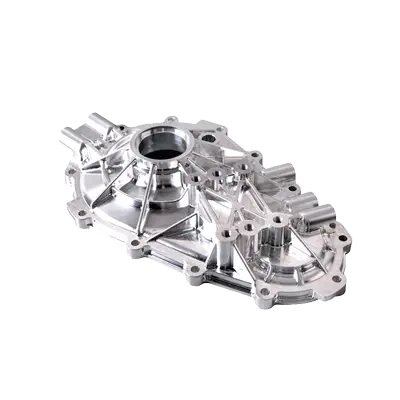The Ultimate Guide to Tapping Deep Holes: Techniques and Best Practices
As technology advances, the demand for precision in various industries increases significantly. Tapping deep holes is a crucial process in producing high-quality components, especially in the aerospace, automotive, and medical industries. In this article, we will delve into the world of tapping deep holes, discussing the challenges, techniques, and best practices for machining titanium alloys.
Defining Deep Holes and the Consequences of Tapping
When a hole’s depth exceeds three times its diameter, it is considered a deep hole. Taping a deep hole requires a deep understanding of the process, as the cutting heat and force generated during machining can significantly affect the part’s integrity. In the case of titanium alloys, the unique properties of these materials present a significant challenge, requiring special considerations.
Solutions to the Challenges of Tapping Deep Holes
To overcome the challenges of tapping deep holes, two primary solutions are recommended: increasing the diameter of the front hole and using taps specifically designed for deep hole tapping.
Increasing the Diameter of the Front Hole
A slightly larger threaded hole can effectively reduce cutting heat and force, but it also decreases the wire’s contact rate. According to the National Committee for Standards and Techniques, in deep holes, only 50% of the total wire height is permissible for exploitation on the hole wall. This rule is crucial when working with small special materials, as it ensures a reliable thread connection.
Calculating the Correct Diameter of the Threaded Hole
The correct diameter of the threaded hole depends on the desired thread contact rate and the number of threads per inch. Using empirical formulas, operators can calculate the ideal diameter of the threaded hole, ensuring optimal results.
Optimizing the Cutting Process
Cutting parameters and tool geometry play a significant role in the success of deep hole tapping. For titanium alloys, the following guidelines should be followed:
- Cutting Speed: A small cutting speed (10-14 inches per minute) is necessary to prevent cold hardening of the material. This parameter is essential, as high cutting speeds can cause the tool to overheat, compromising the quality of the part.
- Chip Flow: The number of tap grooves must be reduced to increase chip space, which helps remove dust and reduces the risk of tool damage. Reducing chip size also improves the tool’s thrust, reducing the cutting force.
- Front and Rear Angles: Small front angles can increase cutting-edge force, increasing tool life. In the case of titanium alloys, large rear angles can reduce friction between the tool and workpiece, improving the tapping process. A compromise between the two angles must be found.
- Coolant: Ensuring the coolant reaches the cutting zone is crucial. Opening a cooling tank at the rear of the tap or using internal cooling taps can improve the flow and effectiveness of the coolant.
Case Study: Tapping Deep Holes on Titanium Alloys
A manufacturer producing aircraft parts may require tapping a deep hole on a 7th-year titanium alloy part. To achieve precise results, the operator should set the cutting speed to 13 inches per minute and use coolant. Regularly monitoring the tap’s condition and replacing it in a timely manner is crucial to ensure the part’s precision.
Conclusion
Tapping deep holes on titanium alloys requires a deep understanding of the machining process, cutting parameters, and tool geometry. By following the guidelines outlined in this article, operators can overcome the challenges associated with deep hole tapping, producing high-quality parts with precision and reliability. As the demand for complex components continues to grow, it is essential to stay up-to-date with the latest techniques and best practices in the field of deep hole tapping.
Header Objectives:
- Define deep holes and their importance in various industries
- Discuss the challenges and considerations for tapping deep holes
- Introduce solutions for overcoming these challenges
- Provide guidelines for optimizing the cutting process, including cutting speed, chip flow, front and rear angles, and coolant application
- Present a case study for tapping deep holes on titanium alloys
Header Tags:
The Ultimate Guide to Tapping Deep Holes: Techniques and Best Practices
Defining Deep Holes and the Consequences of Tapping
Solutions to the Challenges of Tapping Deep Holes
Optimizing the Cutting Process
Case Study: Tapping Deep Holes on Titanium Alloys
Meta Description: Discover the ultimate guide to tapping deep holes, covering challenges, techniques, and best practices for machining titanium alloys, with a case study and expert advice for operators.
Meta Keywords: Tapping deep holes, titanium alloys, machining, cutting parameters, tool geometry, coolant application, case study.

















